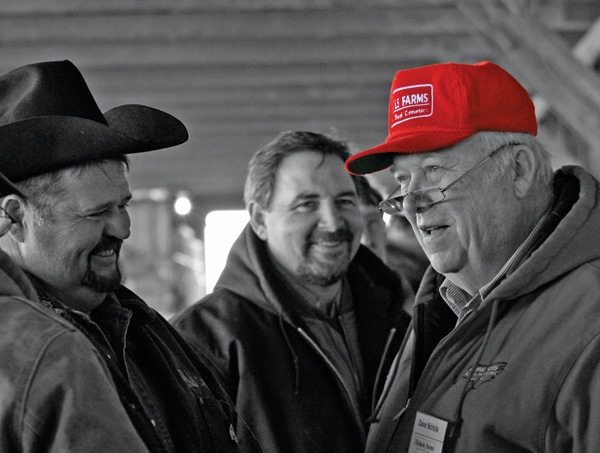Beef producers pull together to better serve our customers
Our forebears laid the groundwork for the success the U.S. beef industry has seen. It’s up to all of us individually to do our parts to continue that progress.
January 8, 2015

Sponsored Content
The Nichols family marked the last chapter of 2014 at our home on Christmas Day. We celebrated as a family and marveled at how the “young uns” had grown and are technologically savvy beyond their years.
We recounted fond memories of those who had passed on and how their wisdom and sacrifice shaped our lives. Nichols holidays are replete with heritage recipes from parents, grandparents and a couple of great-greats. At my age, I’ve become part of that “older” generation, and I‘ve cooked a large prime rib for the family Christmas the last three decades.
If memory serves me correctly, the first of those prime ribs cost about $7 per pound. The last 10 years, I’ve been buying it from the local grocery store. The price increased to $9 per pound about three years ago, and since then has only increased another dollar or so. During those four years, however, the live price of cattle has nearly doubled. How could this have happened?
In the late ’90s, I had the honor of serving as chairman of the National Cattlemen’s Beef Association�’s Product Enhancement Committee (PEC). We cattlemen, through our checkoff dollars, funded the Beef Muscle Profiling Project, which added significant value to the chuck and round. The consumer acceptance of the Flat Iron, Petite Tender, Sirloin Tip, and Delmonico Steaks – individual muscle cuts that evolved from that research – has had a tremendous impact on today’s cattle prices.
At that time, and it’s still true today, a lack of tenderness was cited as the number-one reason for a bad beef eating experience. So the PEC’s next project was to research DNA markers to predict tenderness (or lack of) in live cattle. It was the Carcass Merit Project that paved the way for beef genomics!
Four of the universities that participated in the Carcass Merit Project – Cornell, Iowa State, Colorado State, and the University of Georgia – collaborated to form the National Beef Cattle Evaluation Consortium (www.nbcec.org). I’m honored to serve as its current board chairman.
Nichols sires were the first to be used in both of these genomics projects and currently are part of the Weight Trait Project at the U.S. Meat Animal Research Center in Clay Center, Neb. Research has been a passion of mine since I weighed my first calf and my gray hair hasn’t diminished it one iota.
But the real measure of research isn’t what happens in the Nichols herd, but what happens in our customers’ herds. The recent “Green Tag Sale” at the Creston (Iowa) Livestock Auction was dramatic. Nichols-sired steers outweighed “brand X” sires by 112 lbs. and sold higher within their weight range. Meanwhile, the Nichols-sired heifers weighed 67 lbs. more and put $113 more in the bank of the cowpokes who raised them.
Our bull calves never cease to amaze me. We steer the bottom 25%; we always have and always will. The result is that our steers this year are better than the bulls we sold just 10 short years ago. But that’s the way American agriculture is today. The world is our customer. They like what they’re getting and there’s no looking back.
We do need to look back, however, at the folks who laid the groundwork that made it all possible. I would begin with those first brave patriots who risked all to declare independence from royalty to initiate the first steps of this great country. Then, I’d include all those brave souls who fought brutal wars through the ensuing 239 years to protect that freedom.
Then there are the forward-thinking pioneers who envisioned and passed the Morrill Acts of 1862 and 1890. These measures granted lands and funds to the states to teach agriculture, military tactics, and mechanical arts to members of the working class. These land-grant colleges and universities have educated and inspired generations of simple men of the soil and humble herdsmen for 150 years. And it is they who have transformed the USA into the breadbasket of the world.
You might also like:
Breathtaking photos of winter on the ranch
The cattle market found its bottom; where to from here?
4 ways to raise better beef in 2015
15 photos of cowboy hats in action
8 tips for being a better ranch manager in 2015
Top 20 beef industry events of 2014
You May Also Like



